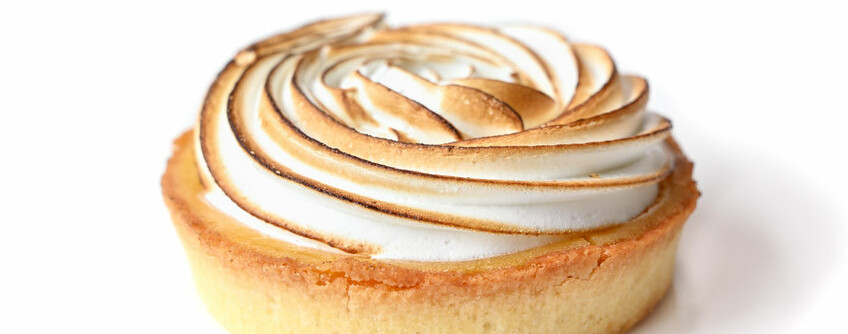
Whether as a topping on pie, stand alone cookies or a decadent layer in cake, meringue is a bakery classic. There’s plenty of room to get creative with this dessert in your bakery. A few options are:
- Cream or chiffon pie
- Sponge, foam, or chocolate velvet cake
- Parisian macarons
- Italian (boiled) meringue
- Marshmallow
How do you make it?
While famously challenging to get just right, the components of meringue are simple enough: egg whites and sugar. There are two methods commonly used:
- Cold meringue method: the egg whites are beaten until stiff, then sugar is gradually added. The mixture is whipped until desired consistency.
- Hot meringue method: water is boiled and a slurry of starch is added. Sugar is incorporated into the boiling mixture until it thickens. When the whipped egg white reach a medium peak, the hot syrup is gradually added. This method is beneficial in preventing weeping of the meringue mass. Other thickeners may be used in place of starch.
For an even easier method, there are dry meringue mixes and bases that just need added water to get those foamy peaks. In fact, there are even vegan and plant-based versions available if you’re aiming for egg-free products.
Meringue Formulation and Process
| Ingredient | Baker’s % (based on flour weight) |
| Liquid egg whites* | 100.0 |
| Cream of tartar | 1.0–3.0 |
| Sugar (refined, granulated)** | 60.0 |

